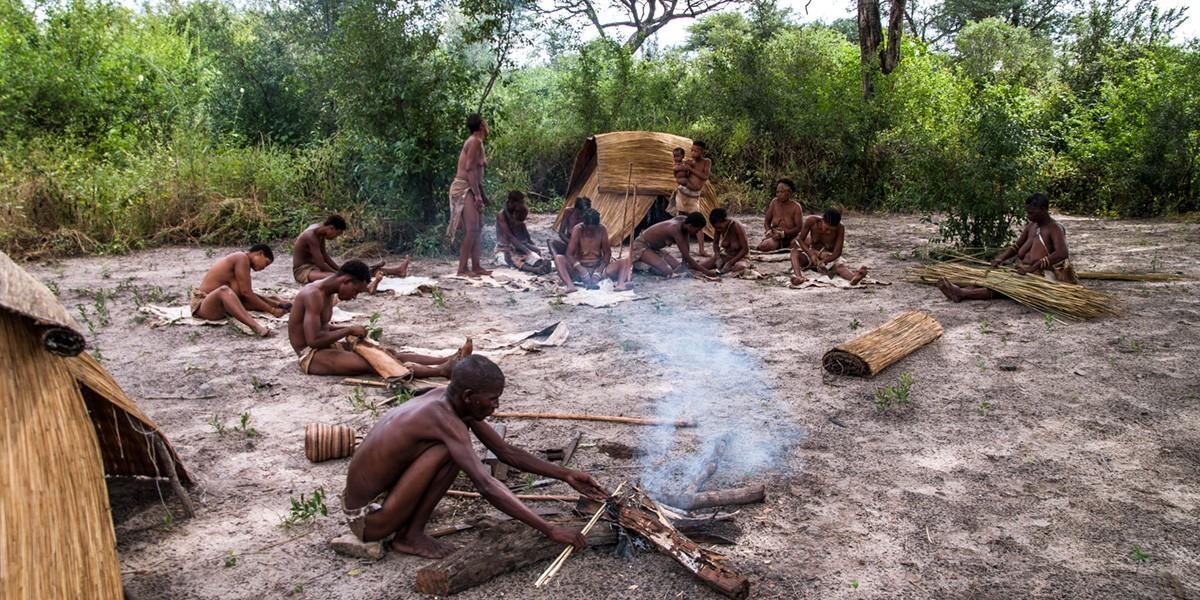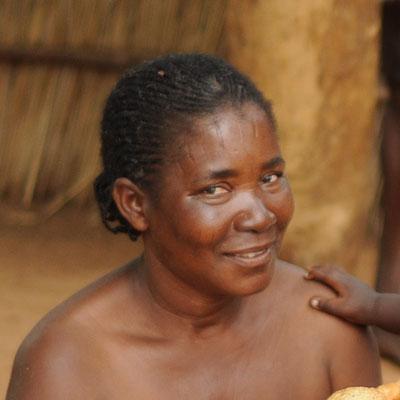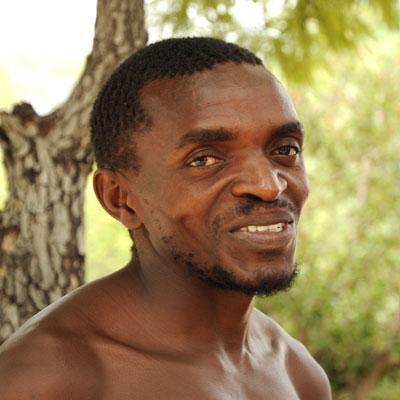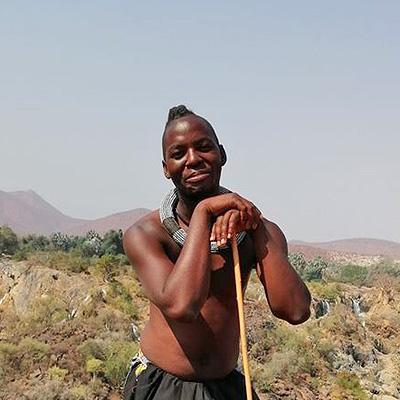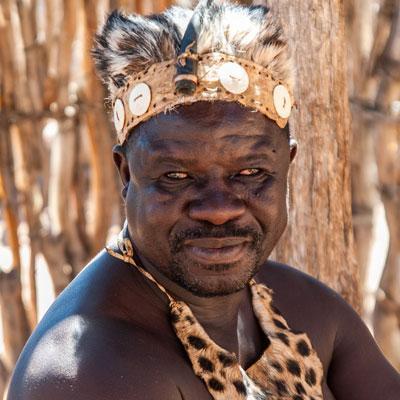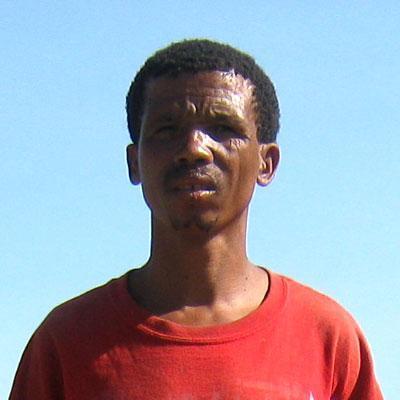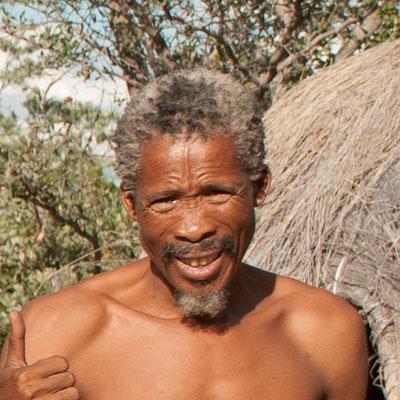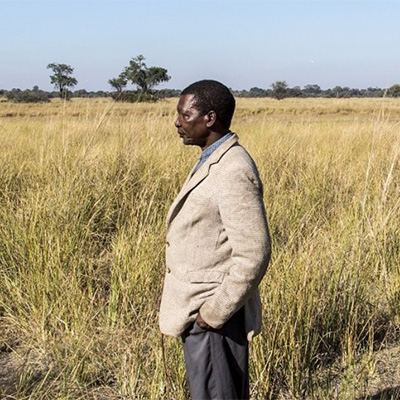Fascinating culture of the San
The Khwe Living Museum is developing
The Khwe museum project is developing in a very good direction. To maintain the positive tendencies, we organized a traditional workshop in the museum on March 24th and 25th, 2021. The aim of the workshop in March was, among other things, to make traditional clothing, tools and weapons. Furthermore, the museum program should be supplemented by other traditional activities. The activities are, of course, also focused on the motivation of the project group.
Khwe Living Museum - information and background
The Khwe project, supported since 2013 by the Futouris association from Germany and the Namibian travel company ATC, is slowly but surely developing towards a very good traditional culture project in the form of a living museum also thanks to the work of the Living Culture Foundation Namibia.
At the last meeting with the Khwe during Christmas 2020, it turned out that many new actors had joined the project and were interested in working in the Living Museum. At that time the concept of the museum was explained again for the new members and the presented program was discussed and refined further. The main point of the "Christmas meeting" was to determine exactly which items of clothing and equipment the actors need for historically correct work in the museum:
Men
- Garment
- Bow, quiver and arrows
- Calabash (bottle gourd)
- Hatchet, knife and spear
- Firewood, drinking tubes
- Spring hare stick
Women
- Clothing including a leather bag for collecting and a carrier bag for babies
- Digging stick
- Ostrich eggs
- Small axe
The aim of the workshop in March was, among other things, to produce a complete set of the items for both men and women, or at least an important part of it. Furthermore, the museum program should be supplemented by other traditional activities. Of course, the motivation of the project sponsors was (as always) also in the focus of the activities.
In addition, I was invited to a meeting with a project group who are planning a larger cultural project (a Khwe Traditional Knowledge Heritage Center) in the context of the Namparks IV program in the area of the Kyaramacan Association, about 1km away from the Khwe Living Museum. This was to discuss possible “synergy effects”. The Kyaramacan Association is an association, similar to a conservancy, that takes care of the administration of the Khwe reserve.
Project report by Sebastian Dürrschmidt
Khwe Workshop Day 1 – 24.03.2021
After buying maizemeal and chicken and a few other things in the nearby town of Divundu for the catering of the workshop with the Khwe, I drove to the project site.
When I arrived at 9:00 am there were many women and children there. I saw many new project participants, some of them already in good traditional clothing and equipment.
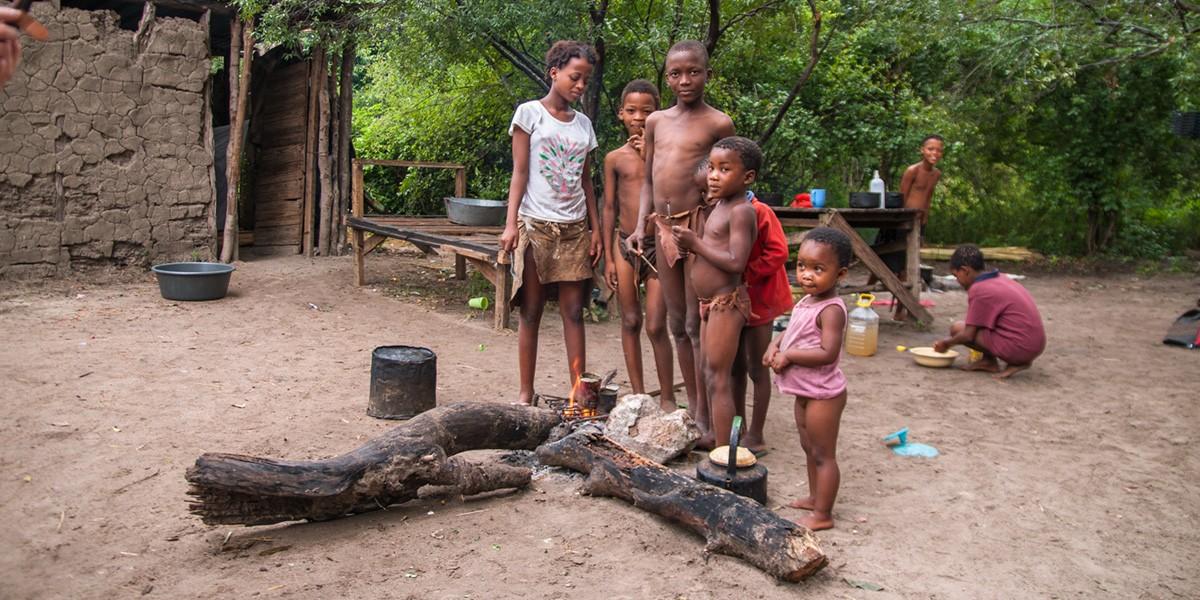
The men weren't there yet, they still organized some things "in the bush", as the women told me. Unfortunately, the project manager Tadeus Cheddau was not present either. As one of the most influential people in this part of the Khwe community, he had to attend the meeting to establish the “Khwe Traditional Knowledge Heritage Center” at the meeting place of the Kyaramacan Association (more on that later).
The women present were happy about the springbok and impala skins that we had brought with us, as well as the half giraffe skin that we had kindly received from the Windhoek Nakara tannery. Before the project meeting, I asked Taddeus to collect the traditional roots for tanning in the bush. However, this was not done yet and so I first went out with the women to look for these roots. However, these were not available in the appropriate size. Plan B was to buy Vaseline in Divundu so that the cleaned skins could be softened. I decided to do this during the lunch break.
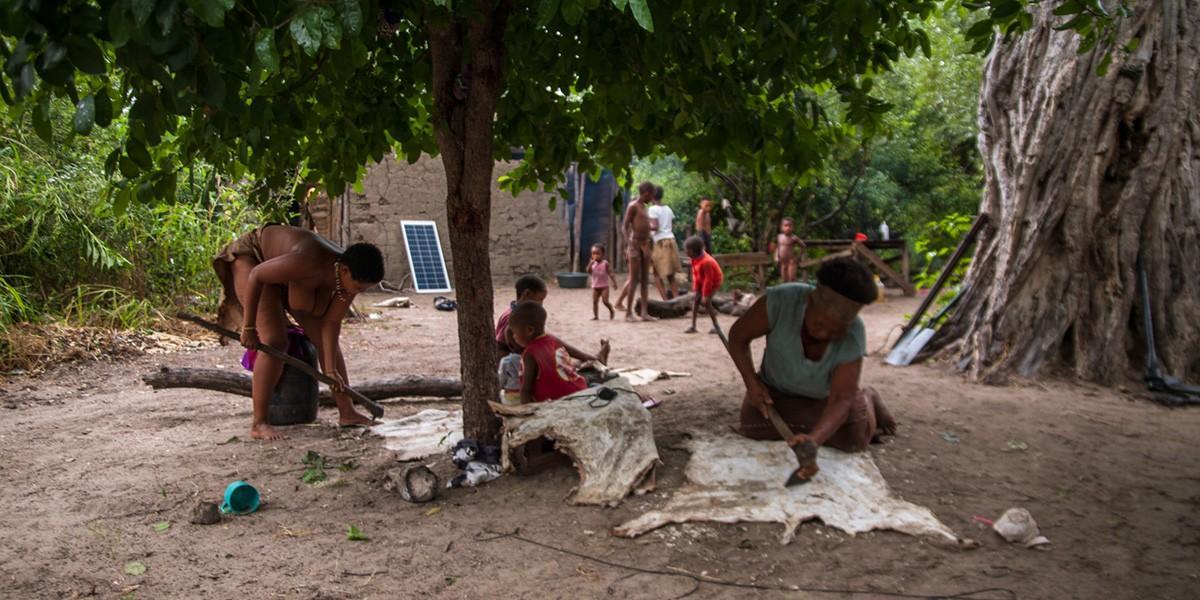
When the men came "from the bush" to the project workshop a little later, the materials we had brought for the blacksmith workshop were first unpacked: all sorts of wrought iron, 2 anvils made of railroad tracks, hammers and tongs for the forge workshop. Shortly afterwards it began to rain heavily, and normal work was no longer possible. We quickly put up a tarp so that the men could continue forging. The women withdrew into the rainproof huts.
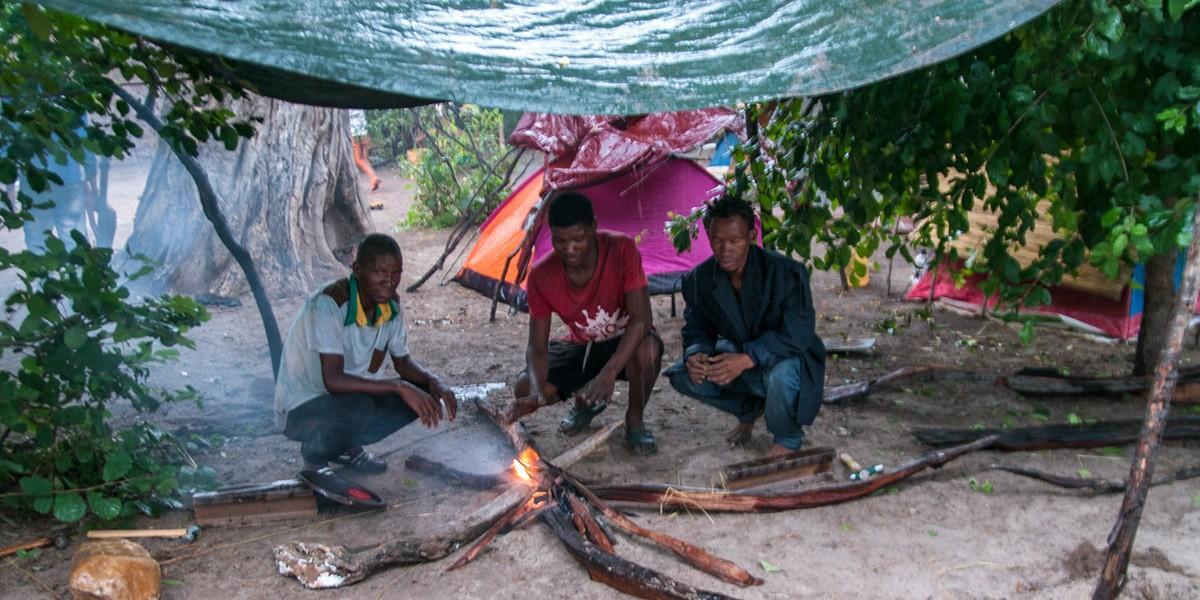
At lunchtime I met briefly with Manager Tadeus and we talked about the Living Museum workshop and the meeting with the Kyaramacan Association.
After lunch I organized some missing items in Divundu, including Vaseline for tanning the hides, metal files for sharpening the forged products and coal for the fire - the wood had become very wet from the persistent rain and no longer created the necessary heat.
I drove back to the project site, but here it was still pouring rain. The women and men continued to work diligently in the shelter of the tents, huts and under the tarp. Due to the lack of space, I could only watch out of the car window and decided in the early afternoon to drive back to my accommodation in the hope that the next day would bring friendlier weather.
Khwe Workshop Day 2 – 25.03.2021
Today I arrived at the Living Museum in clear weather and was surprised to find that almost all project participants were already wearing good traditional clothing and that many forged products and other items of equipment were already made. Apparently the rain from the day before had not clouded the mood of the project sponsors and the people had stuck to the matter with great seriousness and a lot of perseverance. In any case, today's weather made for a good mood and we moved the workshop over to the Living Museum area, which offered some excellent photo opportunities. Here are some pictures from the second day of the traditional workshop:
The processed pictures are put together to form a "Khwe Living Museum project brochure", which will be provided with some information on the concept of the Living Museum, brought to the lodges in Divundu at the next project meeting and used as initial marketing material. It is also pointed out that the lodges can benefit from supporting the project (guests tend to stay at the accommodation for one more day).
The following things were processed and manufactured in the workshop, of course with a strict separation of the areas of activity of men and women.
Women:
- Fur tanning for the production of clothes, blankets, collecting skins, baby carrier bags (with the Khwe actually men’s work, but due to the shortness of the time taken over by the women)
- Manufacture of cords and ropes
- Making bracelets from papyrus (suitable for interactive activity with visitors)
- Manufacture of reed mats
- Manufacture of baskets from Makalani palm fiber
- Jewelry making from ostrich egg shells
Men:
- Forging arrow, knife and spearheads
- Carving of arrows (suitable for interactive activity with visitors)
- Manufacture of bows and spears
- Production of a "spring hare stick"`
Excursus: Khwe Traditional Knowledge Heritage Centre
After the lunch break, the project managers of the NamParks IV program, who, as already mentioned above, had organized a project meeting over the past few days for the development of a large cultural center of the Khwe (Khwe Traditional Knowledge Heritage Center and Golden Highway Concession in Bwabwata National Park.), came to our traditional workshop to talk about possible synergies between the cultural center and the living museum. A heavy rain shower forced us to move to the nearby meeting place of the Kyaramacan Association. Here I briefly presented the concept of the Living Museums and also discussed the previous stages of development with the Living Museum of the Khwe.
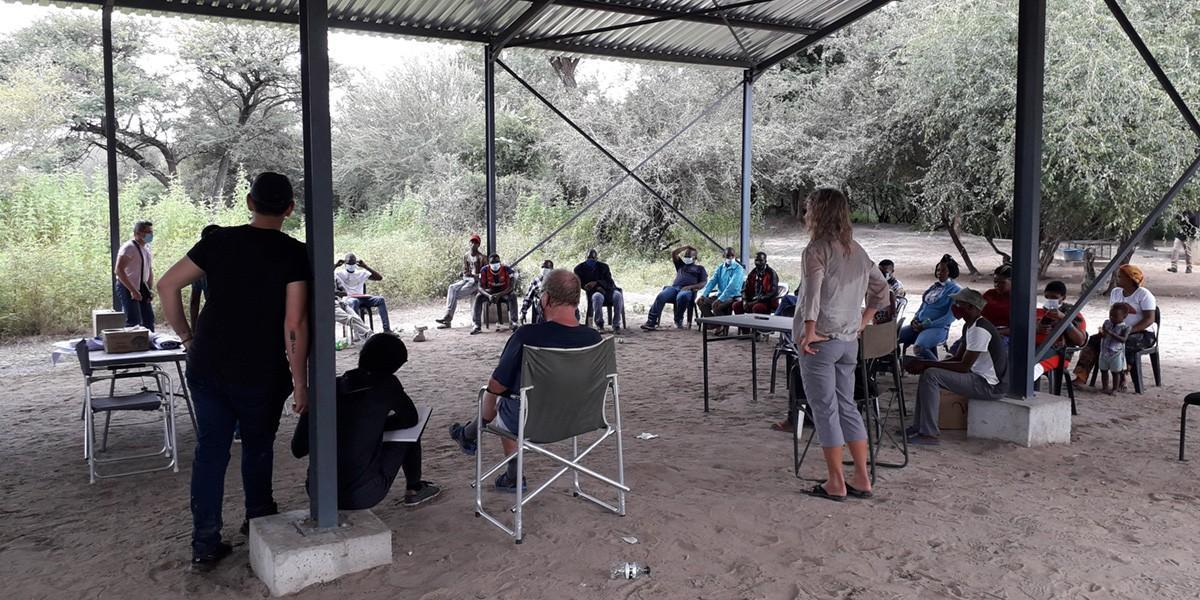
The meeting also included all the important people from the Kyaramacan Association, which wanted to promote the development of all Khwe. The developers of the Cultural Heritage Center (project manager Helmke Von Bach, Deputy Team Leader Annie Symonds, Ben Begbie-Clench, Rodney Amster) invited three architects to submit designs for the cultural center: Jaco Wasserfall, Alao Martin, Kris Barnard
This project could be designed in a similar way to the committed and successful !Kwha ttu project north of Cape Town in South Africa, which is in some aspects (Living Museum, Tracker Academy, Tourism Info Center) many times larger than the Living Museum that we are currently planning. The project is organized by NamParks (MEFT). The feasibility study was financed with funds from the "Kreditanstalt für Wiederaufbau". This project is still in the planning phase and building, in the opinion of the project manager, will start in 2-3 years at the earliest.
After consultation with all "key stakeholders", the following was proposed and confirmed:
- The development of two competing Living Museums at a distance of 1 km does not make sense (this means that the Cultural Heritage Center will not develop its own Living Museum)
- Since the Living Museum of the Khwe, which is currently being developed by the LCFN, is already quite advanced, the further development of this project will initially be approved independently of the larger Cultural Heritage Center.
- When the Cultural Heritage Center is developed or is in a final phase of development, our Living Museum can be incorporated as an independent project.
So we have an official "green light" to continue!
Back in the Living Museum of the Khwe
At the end of the workshop, I addressed a few encouraging words to the project group of the Living Museum in a discussion group:
- The workshop itself and the motivation of the actors was the best I had ever seen in the Khwe project, the development of the Living Museum is well advanced.
- If the next meeting also goes so well, nothing stands in the way of the Living Museum opening soon.
At the end of the project meeting, I discussed the specific implementation of the various programs again - this has to be deepened and "rehearsed" in a further project meeting:
- The guide greets the guests and gives a brief introduction to the concept of the Living Museum
- 4 songs, dances of the Khwe
- General information about the Khwe and San (hunters and gatherers)
- Life in the village - women's work:
- Manufacturing of jewelry (necklaces and bracelets) from ostrich eggs and papyrus
- Food preparation (mangetti nut)
- Ropes and cords
- Manufacturing of mats and baskets
- Life in the village - men's work:
- Fur tanning
- Traditional fire making
- Ancestral shrine and explanation of the spirit world
- Bush walk
- Tracking and tracking (a lot of potential due to frequently occurring wild animals)
- Traps
- Explanations about plants (food, medicine, perfume, etc)
- Blacksmithing
I addressed the group with a question: "What are the next steps in the project?"
- Continued close cooperation
- The good development of the last two days must continue in the project
- The program still needs to be expanded
I also asked what is still needed for further development:
- A large blacksmith's hammer is still missing
- In order to store the things for the Living Museum, the Khwe need a lockable and termite-proof room (here I have already asked a local entrepreneur friend, Georg Both from Mobola Lodge, for a cost estimate for the construction of a pantry)
- Ostrich eggshells and whole ostrich eggs are required
- Eland or zebra skin for footwear (half the giraffe skin was not enough)
- 20 kudu skins for blankets and cloaks
- 40+ impala or springbok skins to demonstrate clothing production as part of the program
- Makalani palm fibers to demonstrate the manufacture of baskets (can be obtained at the next project meeting)
- Traditional bellows for the blacksmith's shop (one of the men in the project group can make them himself)
- Musical instrument from "Monkey Orange" (the women of the project want to make it)
- Food preparation as part of the program (Mangetti nuts)
CONCLUSION
After having noticed both positive and negative development trends in recent months, I am now - for the first time since the project started again in 2017 - completely convinced that nothing stands in the way of the opening of the Living Museum. I was extremely pleasantly surprised! A great project group has assembled last year that apparently really stands behind the concept of the Living Museum and wants to promote its further development.
THE NEXT PROJECT MEETING
I hope to be able to organize the next project meeting at the beginning of May 2021. The following items are then on the agenda:
- Delivery of the above materials
- Obtaining other materials from the area (mangetti nuts, macalana fans, etc.)
- Clearance of an area for the reception building, souvenir shop and parking lot
- Training the detailed program and developing further programs
- Intensive guide training including learning the English terms for certain animals and plants (presentation of flora and fauna books)
- Development of a detailed management structure (manager, finance manager)
- Development of a simple financial concept (around 5% management, 5% maintenance and 90% salary for the actors)
- Project presentation at the lodges, handing over of the first marketing material to the lodges and motivating them
- Construction of a small pantry
- Possibly on the last day final rehearsal and invitation of selected lodges to participate in the program test
Sebastian Dürrschmidt
When you subscribe to the blog, we will send you an e-mail when there are new updates on the site so you wouldn't miss them.



















